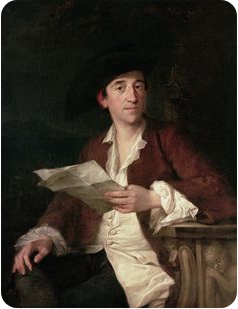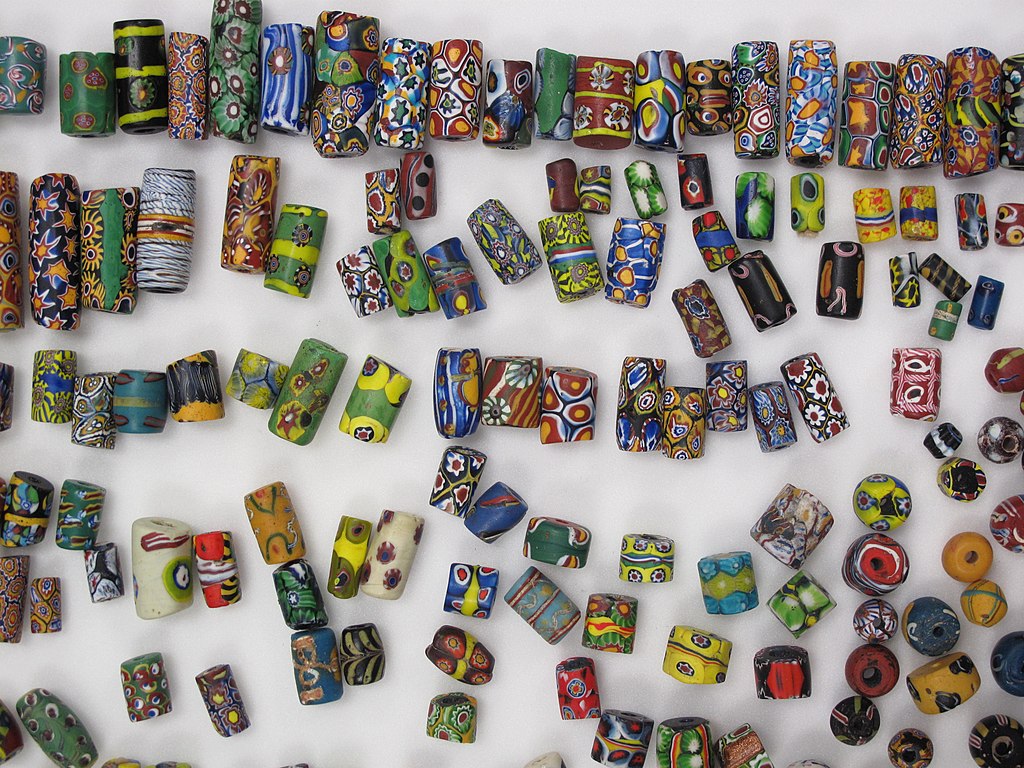Photo (original): Auckland Museum, CC BY 4.0, via Wikimedia Commons
When their church, the Bretagne Church in Pons, France, was burned down in April 1686 Claude Jamineau, the 9 time great grandfather of the Student, and his brother Daniel fled to England with their pastor Elias Prioleau (Huguenot Society of London vol xviii, 1911). As Huguenots (Calvinist protestants) they had lived under religious restrictions in the Catholic dominated state for years despite the protections offered by the Edict of Nantes. When the Edict was revoked in October 1685 the upsurge in persecution, including violent attacks, finally became too much for them. Like many others they escaped to a safe, supportive country.
On 9th April 1687 the brothers, described as Huguenot refugees, officially became Denizens in Britain, by means of a denization letter. In modern terms this means they acquired permanent right of residence. Their pastor, Prioleau, obtained denization to Carolina, then a British colony, and he shortly afterwards left England for South Carolina where he continued to work as a pastor; he died there in 1699. In the meantime the brothers remained in England and began to establish themselves as merchants and traders.
By 1695/96 Daniel Jamineau was a substantial trader with Africa, Barbados and Zante. (Huguenots in English Sea Ports in the Late Seventeenth Century, Robert Gwynn). In Daniel's days as a trader, Zante (or Zakynthos) was under Venetian rule, and Claude, a cloth merchant, was building up his trade links with Venice. It is possible that Claude's connections with Venice pre-dated his departure from France; the father of his pastor Elias Prioleau had been born there and Elias had studied there. However he established his Venice connections, by 1711 Claude's trading relationship with Venice was recognised by the Board of Trade which consulted him on the Commercial Treaty with Venice.
Before 1699 Daniel could not have been trading with Africa as an independent merchant. Until 1699 the Royal African Company (RAC) held a monopoly, but it was removed by an Act of Parliament passed in 1698. I don't know whether Daniel had been involved with the slave trade before this point, although the connection with Barbados suggests that he was. If he had not been, he may have seen the these changes, together with the rapidly increasing demand of plantation owners in the American colonies for cheap labour, as an opportunity not to be missed. The records show that in 1699/1700 he was placing cargoes of beads on ships engaged in the Triangular Trade, such as the Albion Frigate and the Henrietta Marie.
A study of the Political and Economic Implications of the 1698 Act by Liam Horrigan of the University of Kent, names Daniel as one of five major, independent merchants trading with Africa. Between between 1699 and 1712 these five (out of a total of 268) accounted for 25% of the entries in the export log which was compiled for tax purposes by the RAC. While the log may not cover all exports to Africa it shows that Daniel was a major and regular trader who often collaborated with other traders and the RAC itself.
Of course this in itself doesn't show that all Daniel's trade was linked to slave trading. There was still a significant amount of bilateral trade, distinct from the Triangular Trade involved in the transatlantic transport of African Slaves to the Americas.
Claude appears to have started out primarily as a cloth merchant but later diversified into the glass beads trade, a trade that boomed as a result of the slave trade.
At the turn of the 17th-18th century demand from slave traders in Africa for Venetian glass beads was increasing. Beads were frequently exchanged for slaves and consequently made up a significant amount of the cargo shipped from London to West Africa on the first leg of the Triangular Trade, the middle leg of which was the transport of slaves to the Americas.
With his connections in Venice, Claude would have been able to procure the much sought after Venetian glass beads. It is difficult to conclude that their move into bead trading was anything other than a deliberate choice to become suppliers to the slave trade. In their day the beads were used almost exclusively as a currency of exchange for African slaves.
Choosing to deal in beads, and the way they went about it, leaves no doubt that Claude and Daniel were active, knowing and willing participants in the slave trade, even if Claude himself did not deal directly in slaves.
In “The Slave Trade: The story of the Atlantic Slave Trade 1440-1879” by Hugh Thomas Daniel and Claude, are together described as significant traders, in particular of beads and in connection with transatlantic slaves, during the late seventeenth and early 18th century:
“Yellow and green glass beads were desired by the Sapes in the sixteenth century, and so were red carnelians by the people of Calabar in the seventeenth. Daniel and Claude Jamineau—Huguenots in London in the eighteenth century, the most successful dealers in beads—perhaps did best out of this business. One slave merchant reported receiving a prime Negro in return for thirteen beads of coral, half a string of amber beads, twenty-eight silver bells, and three pairs of bracelets. In a good year in the late seventeenth century, about three thousand pounds’ worth of beads and glass would be carried by the RAC [Royal African Company]: bought in Amsterdam, and made in Venice.”
In this lucrative business, the Jamineau brothers, according to Nigel Tattersfield in his book The Forgotten Trade, page 224, established a virtual monopoly:
“Huguenot exiles Daniel Jamineau and his brother Claude [...] had an unofficial monopoly of the supply of beads in London during the period 1698-1725. All the ten per cent merchants and the Company itself were forced to purchase beads - of crystal, amber and jet, with names like bugles, rangoes, olivets and gooseberries - from this single source".
The ten per cent merchants where independent traders exporting to Africa. In addition to customs duty, between 1698 and 1713 British merchants involved in the Africa trade had to pay 10% tax on goods exported to Africa. This tax, introduced by the 1698 Act, was levied to maintain the African Company’s forts down the West African coast (National Archive guide to records covering Slavery and the British trans-Atlantic slave trade).
Research into the history of the Henrietta Marie 1699, which sank in 1700 and was discovered in second half of 20th century off the southern tip of Florida revealed that Daniel and another trader, Thomas Starke, had placed a cargo of 2074 pounds (940kg) of glass beads on board prior to her last voyage. Around 13,000 of these beads, amounting to less than one pound weight, were recovered during the exploration of the wreck. (Submerged History: Underwater Archeology in Florida, ed. Roger C Smith). The report continues:
"The vast majority of those recovered are nondiagnostic "seed types" although a few larger, striped varieties known as "gooseberries" were also found in addition to a few tube types. The "seeds" appear in at least ten colours, two of which appear to have significant historical implications. The journal of James Barbot, supercargo aboard Albion Frigate, 1699, stated, "The Blacks objected much against our ... green beads, ... yellow beads and some other merchandise as of little or no demand there at the time." Among the beads recovered from the Henrietta Marie at least 85% comprised these two colours, suggesting that she encountered the same discriminating tastes as the Albion Frigate several months earlier."
The researchers speculate that the Henrietta Marie, which sank on its final leg of the Triangular Trade route after delivering its cargo of slaves, most likely to to Barbados and Jamaica, had called at the Calabar area in modern day Nigeria, as had the Albion Frigate on which Daniel had also placed cargo. There is no way of knowing how many of the beads loaded onto the Henrietta Marie had been accepted by the African traders, but Daniel had misread the fashion in shipping the wrong colours. Maybe it meant that fewer Africans were forced onto the ship than might otherwise have been.
Little more than ten years after fleeing to England, Claude was a successful business man and clearly had sufficient influence to lobby for his naturalisation, a step which in those days required a private act of parliament. The Journal of the House of Commons volume 9 page 268 shows that on Wednesday 6th March, 1699 (in 12th year of the reign of William 3rd, William of Orange) Claude Jamineau together with a number of others “took the Oaths in order to their Naturalization”. Claude was on his way to becoming part of the establishment, no doubt his money and trading connections helped; in 1753 his son Isaac (1710-1789) pictured below was appointed as British Consul in Naples.

Painting of Isaac Jamineua, British Consul in Naples painted by Angelika Kauffmann.
Claude and Daniel were making themselves rich by supplying beads to to slave traders, but did they both become slave traders themselves and/or did they invest directly in the risky but profitable business of Triangular trade? Each leg of the trade multiplied the profit to be made, and the brothers were first and foremost businessmen of their age. One page 254 of his book The Forgotten Trade, Nigel Tattersfield identifies them, jointly, primarily as slave traders and only secondly as purveyors of beads:
“A sizeable vessel of 230 tons burden, the Martha had previously been employed by the Huguenot slave traders (and purveyors of beads) Daniel and Claude Jamineau.”
Other than this one reference I have not yet found anything to indicate that Claude was directly involved in the procurement and sale of slaves but the records of the Henrietta Marie show that Daniel was not merely procuring beads, but shipping them himself to trade in Africa. This can only really mean that he was fully engaged in the Triangular trade and that he purchased Africans and sold them on to plantation owners, either for cash or commodities. Claude's role may have been procuring the beads and selling them to slave traders, including his brother Daniel. It would be interesting to track down the primary sources, to further explore their involvement, especially after 1712, and uncover what happened to the money they made and whether Claude also traded beads to Africa in exchange for slaves.
Claude made a lot of money and established himself in high circles, in part if not significantly, due to his role - at the very least - in facilitating the slave trade. He was a very rich man when he died in 1727 and for a while at least his children and grandchildren had access to a network of influential people. In his will he left legacies for the French Churches and the French Hospital in London, for his friends, servants and staff both in Britain and Venice with the remainder equally to his children. Maybe some of his money and influence made it as far as his great granddaughter Harriott Andrews (wife of Joshua Jenour) but her son Thomas Jenour (5 times great grandfather to the Student), who had been a lieutenant in the British Army in India and married to the daughter of another rich man, was imprisoned for debt on the Isle of Man in the late 1820s and his remaining estate distributed to his creditors.
If any descendants of Claude or Daniel owned slaves themselves I can't say as I have not compiled a comprehensive database of their descendants, but I do know that no one in the Student's direct line back to Claude are listed in the Imperial College database. Any financial gain or advantage in her line, over and above any accruing from the benefits to the general historic economy, appears to have ended with Thomas Jenour.
